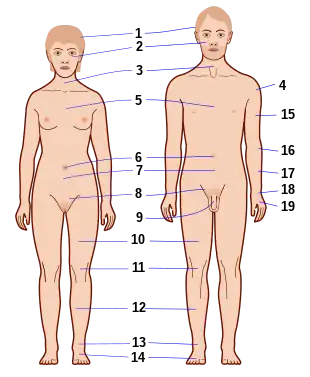īnum
See also: inum
Akkadian
| Root |
|---|
| '-y-n |
| 1 term |
| Picture dictionary | ||
|---|---|---|
| ||
|
Etymology
From Proto-Semitic *ʕayn- (“eye”), from Proto-Afroasiatic *ʕayVn-. Cognate with Arabic عَيْن (ʕayn) and Biblical Hebrew עַיִן (ʕáyin).
Pronunciation
- (Old Babylonian) IPA(key): /ˈiː.num/
Noun
īnum f (dual īnān, plural īnū) (from Old Akkadian on)
- eye
- 𒅆 𒇷𒈬𒌓𒌈 [īnum lemuttum] ― IGI le-mu-ut-tum ― evil eye
- 1755–1750 BCE, King Hammurabi of Babylon, translated by OMNIKA Foundation, Hammurabi Code, The Louvre, Law 196:
- 𒋳𒈠 𒀀𒉿𒈝 𒄿𒅔 𒌉 𒀀𒉿𒅆 𒌔𒋰𒁉𒀉 𒄿𒅔𒋗 𒌑𒄩𒀊𒉺𒁺
- [šumma awīlum īn mār awīlim uḫtappid, īššu uḫappadū]
- šum-ma a-wi-lum i-in DUMU a-wi-lim uḫ-tap-pi-id i-in-šu u₂-ḫa-ap-pa-du
- If a free man has blinded the eye of a member of the awīlum class, his eye will be blinded.
- spring, well
Alternative forms
| Logograms | Phonetic |
|---|---|
|
|
Related terms
- īn lemuttim
This article is issued from Wiktionary. The text is licensed under Creative Commons - Attribution - Sharealike. Additional terms may apply for the media files.

